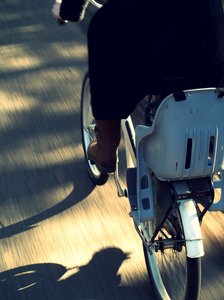Bicycling safely around town is a cooperative activity, governed by a strict set of rules. Traffic rules incorporate practices found, through experience, to facilitate safe and efficient travel.
Since not everyone has enough experience to appreciate the rationale of the rules, it’s important that our officers are making sure that they’re on the ball with enforcement to help instill safe habits among all travelers. An effective police officer is ready to explain the principles that are involved when a bicyclist or a motorist uses poor judgment. These poor judgements increase the risks of an accident for everyone.

And you need to be aware of those key principles — for the safety of everyone out there.
Our Cape Coral bicycle accident lawyers understand more than 50,000 bicyclists a year are seriously injured in the United States and Florida is the most dangerous state in the nation for serious and fatal bicycle accidents. More bicyclists are killed in the state of Florida than any other state in the country.
That’s why we’re here — to help. Look over these key principles for cyclists to help ensure safe riding throughout the remainder of the year (and during some of our busiest travel periods):
-Bicyclists fare best when they are treated as motorists on our roadways. In close to half of all bicycle accidents, a motorist violated traffic rules.
-A bicyclist is safer riding with the flow of traffic instead of against it. A cyclist who rides against oncoming traffic is increase their risks of being hit by a passing motorist by close to 5 times.
-Avoid riding during the evening hours. About 60 percent of fatal bicycle crashes in Florida occur during non-daylight hours.
-Lamps must be used on a bicycle after sunset to alert other drivers. Unfortunately, reflectors may not be enough to allow a motorist to see you. Lights are essential.
-A cyclist traveling more slowly than other traffic should ride to the right, except to pass, to make a left turn, when necessary to avoid hazards, or when a lane is too narrow to share.
-Every bicycle must be equipped with a brake or brakes that allow the rider to stop within 25 feet from a speed of 10 mph on dry, level, clean pavement.
-A bicyclist is not allowed to wear headphones, a headset or any other kind of listening device while riding. (Hearing aids are okay.)
-Make sure you’re always wearing a helmet. We recommend that everyone wear helmets when riding a bicycle, but helmets are required by law for children under 16 years of age.
Drivers are reminded to follow all street signs and be cautious of bicyclists at intersections. Proper yielding prevents crashes; stopping and proceeding without yielding does not.
A study from officials with the Insurance Institute for Highway Safety (IIHS) discovered that roughly 70 percent of accidents that occurred at one- and two-way stop signs involved stop sign violations. But in two thirds of these cases, the driver did stop; the crash occurred when the driver then proceeded without yielding.
If you or someone you love has been injured in a bicycle accident, contact Associates and Bruce L. Scheiner, Attorneys for the Injured, today for a free and confidential appointment to discuss your case. Call 1-800-Dial-BLS.
More Blog Entries:
Lee County Officials Target Bicycle Safety, Florida Injury Lawyer Blog, May 13, 2013
Southwest Florida Bicycle Safety in Focus this May, Florida Injury Lawyer Blog, May 6, 2013
 Florida Injury Lawyer Blog
Florida Injury Lawyer Blog





